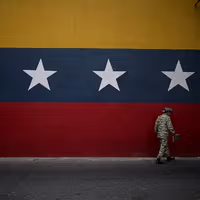Tehran stock market opens deep in the red after 12-day Israel war
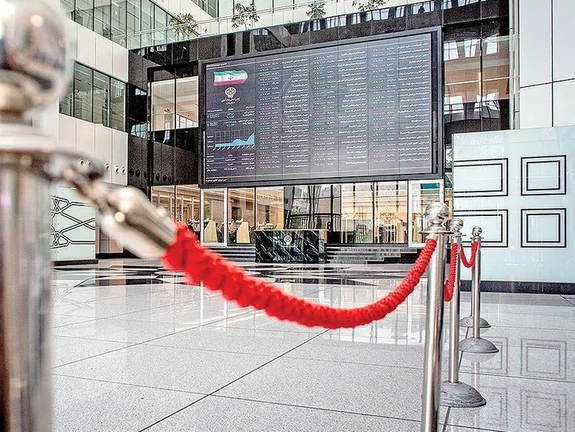
Tehran’s stock market reopened after a 12-day conflict between Iran and Israel with a sharp collapse, as investor anxiety triggered a sweeping sell-off.

Tehran’s stock market reopened after a 12-day conflict between Iran and Israel with a sharp collapse, as investor anxiety triggered a sweeping sell-off.
Over 99 percent of listed companies dropped in value, triggering an unprecedented 350 trillion-rial (approximately $416.7 million) sell-off queue.
By the close on Saturday, total sell orders reached 350 trillion rials. The main index fell 62,503 points, or 2.1 percent, to 2,922,101. The equal-weight index lost 15,522 points, ending at 908,163.
The market’s sensitivity to political and security developments deepened investor distrust and anxiety this time. Tehran’s stock market had previously declined amid Tehran’s risky foreign ventures.
In prior crises such as earlier missile strike operations on Israel and after the death of former president Ebrahim Raisi, the Securities and Exchange Organization curtailed daily trading limits to contain losses. Normally, Iran’s daily price fluctuation limit is five percent.
“It was expected the market would start negatively after nine days of closure. Officials tried to control the fallout from Israel’s attack but failed,” economic journalist Arash Hassannia told Iran International.
The market reopened amid crisis signals. Within 90 minutes, over 99 percent of stocks traded in the red. The main index dropped about one percent to 2,957,000 points. The equal-weight index slid nearly 3,800 points, nearing 920,000.
Trade volume in the first 90 minutes exceeded 20 trillion rials ($23.8 million), with nearly 12 trillion rials ($14.3 million) withdrawn by individual investors. Banks and investment firms led trading values with 6.6 trillion rials ($7.85 million) and 2.8 trillion rials ($3.33 million), respectively.
Economy news outlets described the market situation as “a full-scale crisis.” One warned that the military conflict’s end failed to calm the market; instead, uncertainty deepened, with investors fearing new fighting. Analysts see this drop as potentially signaling a longer-term crisis.
Massive sell queues, scarce buyers, broad liquidity outflows, and widespread losses are signs of what analysts call “the start of a psychological and structural crisis.”

Iranian authorities have summoned and interrogated at least 35 Jewish citizens in Tehran and Shiraz over their contact with relatives in Israel, the US-based human rights group HRANA said.
The inquiries, which focused on personal ties with relatives in Israel, mark the most expansive state action against Iranian Jews in decades, HRANA reported.
“Emphasis was placed on avoiding any phone or online communication with abroad,” the rights group cited a source close to the families as saying.
Jews are not the only minority group being targeted. Iranian security forces raided at least 19 homes belonging to members of the Baha’i community during and after the Israel war, human rights groups say.
Analysts say the moves reflect both the state’s effort to project strength and its its reliance on targeting minorities when facing external setbacks.
Rights concerns
Pegah Bani-Hashmi, a senior legal researcher, told Iran International that the accusations of espionage against Jewish and Bahai citizens are “factually baseless and violate Iran’s own constitution.”
“These communities usually stay out of political activism,” she said. “There’s no legal or security justification for what the state is doing.”
Shahin Milani, director of the Human Rights Documentation Center, told Iran International the arrests expose the government’s failure to identify actual threats.
“Baha’is and other citizens don’t have access to classified information. They’re always under surveillance. Accusing them of spying is just an excuse to deflect blame and intimidate the population,” he said.
Iran’s parliament passed a law in 2011 banning travel to Israel. Many Iranian Jews maintain familial and religious ties there, and rights experts say the law has become a tool for suppression.
Community fears grow
A senior figure in Tehran’s Jewish community told HRANA that “we’ve seen limited cases before, but this is unprecedented.” He said the scale of recent summonses has triggered deep concern about the safety of their community.
Authorities have not issued formal charges but told families the actions are intended to gather information to prevent crimes.
Rights lawyers warn that these measures could constitute discrimination based on religion and ethnicity, in breach of Iran’s obligations under international law.
Rani Omrani, an independent journalist, told Iran International that Tehran’s tactics reflect its inability to confront Israel directly.
“Because they can’t reach Israel, they’re punishing innocent Jews at home,” he said.
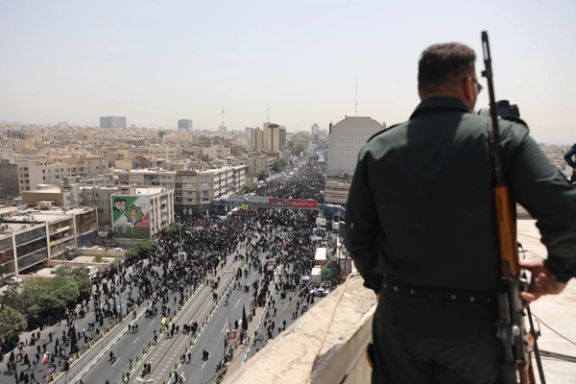
Iran held a funeral ceremony in Tehran on Saturday for dozens of people killed during the 12-day conflict with Israel, including senior military commanders and nuclear scientists.
Senior Iranian officials attended the event and delivered remarks touching on a range of themes, including national unity, military resilience, and nuclear oversight.
State media said the ceremony was held for 60 individuals. Among them were at least 16 nuclear scientists and 10 senior military commanders.
Among those commemorated were Mohammad Bagheri, commander of the Iranian armed forces; Hossein Salami, head of the Revolutionary Guards; and Amir Ali Hajizadeh, who led the Guards’ Aerospace Force. All three were killed on June 13, the first day of the conflict.
Ali Shamkhani, a senior advisor to Supreme Leader Ali Khamenei, attended the ceremony, appearing in public for the first time since being wounded in an Israeli strike earlier this month. He had been targeted on the first night of Israeli attacks, and initial reports said he had been killed. State-linked outlets later said he was wounded but survived.
Supreme Leader Ali Khamenei was absent, though in a televised message earlier this week, he said that Israel had been “brought to its knees” and that the United States had “gained nothing” from the war.
Officials denounce IAEA and bar inspectors
Several officials used the occasion to deliver criticism of the International Atomic Energy Agency (IAEA). Judiciary Chief Gholamhossein Mohseni-Ejei said cooperation with the agency “cannot continue as before,” and accused it of passing information to "hostile states".
Lawmaker Hamid Rasaei said parliamentary legislation bars IAEA Director General Rafael Grossi and his team from entering Iran, and that nuclear surveillance equipment had been deactivated. Deputy Parliament Speaker Ali Nikzad called Grossi a liar and said he would face consequences for his role.
Remarks emphasize strength, resistance and imposed ceasefire
Other speakers focused on the war’s outcome. Several described the ceasefire as something forced on Israel and the US, not the result of any concession by Iran.
Parliamentarian Ebrahim Azizi said Iran had never surrendered and instead “forced its enemies to submit to the will of the Iranian people.” Former IRGC intelligence chief Hossein Taeb said Iran was prepared to deliver a stronger blow in the event of renewed hostilities.

Tehran would be open to a nuclear deal in which it transfers its stockpile of highly enriched uranium abroad, Iran's ambassador to the United Nations said in an interview with Al-Monitor.
The dovish comments were the most expansive official expression of Iran's nuclear stance since the end of a twelve-day war which saw the Islamic Republic's nuclear sites attacked by Israel and the United States.
However, the whereabouts of Iran's near-bomb-grade uranium stockpiles remains unknown.
"We would be prepared to transfer our stockpiles of 60% and 20% enriched uranium to another country and have them transferred out of Iranian territory in return for receiving yellowcake," Ambassador Amir Saeid Iravani told Al-Monitor in a written interview.
Before the conflict, Iranian officials had loudly rejected the idea of such a transfer.
Around 400 kilograms—more than 900 pounds—of uranium enriched to 60% purity is unaccounted for. A former top UN nuclear official told Iran International that the risk of Iran's acquisition of a nuclear weapon remains until the International Atomic Energy Agency (IAEA) confirms its location.
“One should not relax because this material as such is enough for 10 nuclear weapons if it is enriched further to 90%,” former Deputy Director General of the IAEA Olli Heinonen told Eye for Iran.
Regional consortium
In his interview with Al-Monitor, Iravani added Tehran is open to a regional nuclear consortium broached in US-Iran talks but does not see the plan as a substitute for a domestic nuclear program.
Iran, the envoy said, is willing to “collaborate with all countries in our region that operate nuclear reactors — whether on issues of reactor safety or the supply of reactor fuel,” if such a move is a “complementary initiative” and not a substitute for Iran’s domestic nuclear program.
The United States, according to domestic media reports, proposed to Iran in talks preceding the war the creation of a nuclear consortium potentially including Saudi Arabia, Oman, the United Arab Emirates, Qatar and the United States.
The arrangement would aim to supply Iran with enriched uranium for civilian use in exchange for partial sanctions relief on Iran’s oil exports, central bank, and the shipping sector.
Address unknown
The location of the proposed consortium was not determined in the talks as Tehran insisted enrichment must occur on its own soil.
Axios and The New York Times reported earlier this week that US negotiator Steve Witkoff has proposed creating a regional consortium to break the deadlock in stalled nuclear talks.
Iran's foreign ministry early this month rejected giving up domestic enrichment, but Iravani appeared to give the consortium idea its biggest official endorsement yet.
“A consortium could very well be one of the forms such cooperation might take,” Al-Monitor quoted Iravani as saying.
Asked if Iran would limit enrichment to the auspices of the consortium operating within Iran, Iravani told the outlet: “In principle, we have no objection to that; however, we should consider it based on the details of any potential proposals we receive.”
Iravani told the outlet that the Iranian parliament's recent move to bar cooperation with the International Atomic Energy Agency "does not signify Iran’s withdrawal from the NPT," or non-proliferation treaty.
A nuclear deal with the United States, Iravani added, must respect “Iran’s rights as a responsible (NPT) member”.
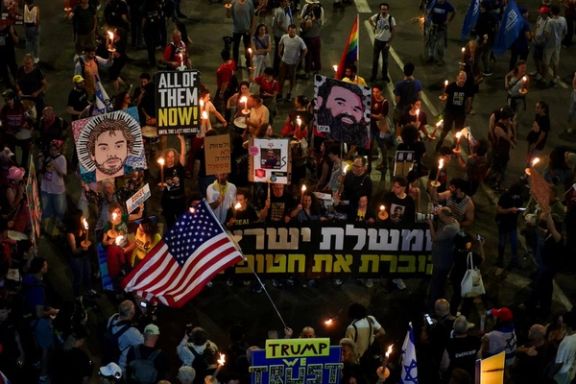
As a shaky Iran-Israel ceasefire holds, Israel’s Hostage Families Forum is demanding any deal with Iran must free dozens of hostages held by Iran-backed Hamas militants in Gaza since their October 7, 2023 attack.
“The ceasefire agreement (with Iran) must expand to include Gaza,” the group said in a statement on Tuesday.
“We call on the government to engage in urgent negotiations that will bring home all the hostages and ends the war. Those who can achieve a ceasefire with Iran can also end the war in Gaza.”
Of the 251 people abducted on October 7, around 50 remain in Gaza. Only 20 are believed to be alive.
“To conclude this decisive operation against Iran without leveraging it to bring home the hostages would be a grave failure,” the statement continued. “With our enemies at their weakest, this is a critical window—the deal to end all deals.”
The US continues to mediate between the two sides. In an interview on Fox News, Middle East envoy, Steve Witkoff said late on Tuesday that talks were promising and that Washington was hopeful for a long-term peace deal.
"We are already talking to each other, not just directly but also through interlocutors," Witkoff said.
Iranian losses
After a surprise attack on June 13, Israel assassinated some of Iran's top military leadership and nuclear scientists and pounded Iranian military infrastructure.
During the 12-day conflict, 29 Israelis and 610 Iranians were killed, according to official figures. Thousands more have been injured and displaced on both sides.
The ceasefire has drawn mixed reactions in Israel as US intelligence says Iran's nuclear program has only been set back by a matter of weeks or months and its enriched uranium supply remains intact.
President Donald Trump downplayed the claims, saying the US strikes have "obliterated" the three sites struck, Fordow, Natanz and Isfahan.
“Trump just wants this over quickly so he can claim he made peace,” said Zvi Tuito, a Jaffa resident whose home was damaged in strikes last week. “He needs to calm opposition in his party and boost his ratings, but I don’t think it’s over.”
Polls in Israel showed consistent support for the war among Jewish Israelis, though much less so among the 20% Arab minority.
'We can't go on like this'
Iran has long backed militant groups under its so-called ‘axis of resistance,’ pledging solidarity with the Palestinian cause. Since October 7, Israel has come under attack from Iranian allies in Gaza, Lebanon, Syria, Yemen, and Iraq.
“We can’t go on like this,” said Ilanit Neiman of Ramat Gan, a suburb of Tel Aviv which has been hit by rockets. “To stop this forever war, we need to cut off the source of weapons and funding—Iran.”
She was skeptical about the ceasefire’s durability. “We need to know this deal brings real security. Otherwise, we’ll be back here in months.”
As Israel's military campaign in Gaza continues - and 7 soldiers died since the Iran ceasefire took effect - some Israelis see the ceasefire with Iran as a gateway to broader peace.
“This has to be a comprehensive deal,” said a mother whose son is still fighting. “His wife and kids want him home. We’re in the best position in years—let’s not waste it.”
But even diplomats are unsure what comes next.
“Nothing is clear. Everything feels very fragile,” said one Israeli ambassador, speaking to Iran International minutes before an Iranian missile strike followed the ceasefire announcement.
Another said: “These are crazy days. We really can’t predict a thing.”
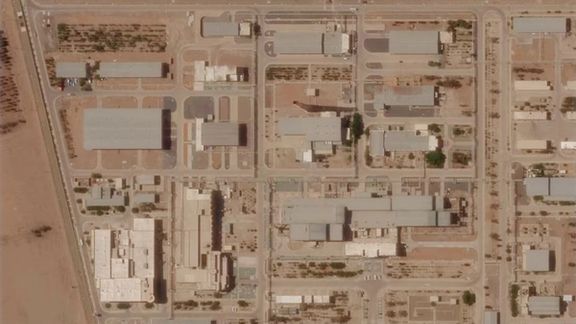
A nuclear Iran is still possible despite US and Israeli strikes on key nuclear sites, a former top UN nuclear official told Eye for Iran, noting that the whereabouts of Tehran's near-weapons grade uranium was unknown.
Around 400 kilograms—more than 900 pounds—of uranium enriched to 60% purity is unaccounted for.
Until the International Atomic Energy Agency (IAEA) confirms its location, the risk remains high, former Deputy Director General of the IAEA Olli Heinonen warned.
“One should not relax because this material as such is enough for 10 nuclear weapons if it is enriched further to 90%,” Heinonen told Eye for Iran. “So in a big picture, yes, Mr. Trump was correct, but it should have had this caveat telling that it's not yet over.”
Trump gave the green light to launch 75 precision-guided munitions—including bunker-buster bombs—and more than two dozen Tomahawk missiles against Fordow and two other Iranian nuclear sites in the early hours last Sunday, Tehran time.
Satellite imagery appeared to show that the strikes had severely damaged or destroyed the Fordow plant and possibly the uranium-enriching centrifuges it housed.
Trucks had reportedly been seen lining up at the Fordow facility in the days before the attack, prompting speculation Tehran may have relocated its uranium stockpiles in advance.
US and Israeli intelligence officials were aware of the movement at the time but opted not to act in order to track the trucks and await Trump’s final order to strike.
While Trump hailed the mission as a complete success—based on Israeli intelligence that said Iran’s nuclear program had been set back by “many years”—American officials said preliminary findings suggest a delay of only “a few months.”
A combative Defense Secretary Pete Hegseth forcefully defended the US strikes on Iran’s nuclear program, calling them a “resounding success” and accusing the media of rooting for failure.
“Because you cheer against Trump so hard — in your DNA and in your blood, cheer against Trump — because you want him not to be successful so bad, you have to cheer against the efficacy of these strikes,” Hegseth told reporters at a Pentagon briefing. “You have to hope maybe they weren’t effective.”

What can you do with enriched uranium and obliterated nuclear sites?
Heinonen explained that even with Iran’s main enrichment facilities damaged, the risk remains. A small, easily concealed facility, could turn the missing uranium into weapons-grade material within days.
“Then someone may ask, but they were just wiped away these enrichment plants, so why one has to worry, because such kind of installation, which can convert this material in a matter of days for the first weapon, needs about 1,000 centrifuges only."
"It's just a normal workshop,” he added, “not a big building. And it would be very difficult to find, because it can be concealed among others. Technical buildings in any industrial site or warehouse complex.”
Heinonen joined the IAEA in 1983 and served as Deputy Director-General and Head of the Department of Safeguards from 2005 to 2010. He was among the top officials overseeing Iran’s nuclear file during the pivotal period from 2002 to 2010.
“There is this history of concealment and I think that one has to be careful in accepting explanations,” Heinonen warned. “Iran started to work with uranium metal in early 1990s in secrecy ...to the IAEA… Never disclosed it… until we found it at a later date.”
Heinonen said even after the Fordow, Natanz, and Isfahan strikes, “the question is what about the rest of the weapon?” Iran would still need to machine uranium metal into a weapon-ready shape, using small, controlled batches of critical material.
“It will take all this one about one month. That’s it,” he said. “From start to have the weapon components on your hand.”
But the presence and availability of trained engineers and technicians is also a factor. “They are technicians, they are engineers, they are people who get their hands dirty with this material. Are they still available?” he asked.
“If they are available, then this scenario… in principle [is] possible.”
A race to verify
Heinonen said the IAEA must now be given full access and cooperation by Iran to verify the location and condition of the uranium. If Iran is unwilling, there’s no magic tool to find it.
“Only intelligence. There is no magic detector which you fly around and say, okay, it's there,” he said. “If Iran wants to prove that they have the material, why to hide it? If they have no intention to use it, why to [not] find it?”
The missing material is a red flag that should expand the scope of inspections and investigations.
Iran recently informed the IAEA about a new underground enrichment facility, described as “heavily secured,” but Heinonen said its nature remains unclear.
“Let's find facts first. What was the new site? Can anyone tell? Was it enrichment? Was it the storage? Was the storage of centrifuges? Was it assembling of centrifuges?” he asked.
Iran’s Foreign Minister, Araghchi, posted on X Friday:
“The Parliament of Iran has voted for a halt to collaboration with the IAEA until the safety and security of our nuclear activities can be guaranteed.”
Araghchi’s statement signals a hardening stance in Tehran just as international inspectors are racing to verify the fate of Iran’s enriched uranium.
For Heinonen, the message is clear: transparency is now the only path to de-escalation.
“This is the truth-telling test,” he warned. “Because there's no reason to resist. If this is a civilian program, why restrict the IAEA's work?”
Until Iran proves otherwise, the world must treat the threat as far from over.
You can watch the full episode of Eye for Iran on YouTube or listen on any major podcast platform like Spotify, Apple, Amazon Music and Castbox.




